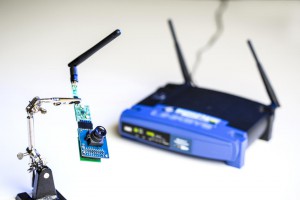Share This
Related Posts
Tags
PoWiFi
By Anca Gagiuc on Feb 8, 2016 in Technology
Never a dull moment. Technology never stops evolving, thanks to dedicated innovators from all over the world. Now, here’s something that could make Nikola Tesla’s dream a reality: Wi-Fi powered electronics.
In this era, we’re surrounded by Wi-Fi almost everywhere we go – local area networking technology allows electronic devices to connect to the network. However, some raised the question: are we using this technology to its full potential?
Every time I think of Wi-Fi, my subconscious shares a second with Nikola Tesla, the man who was keen on making wires redundant. Researchers at the University of Washington wish to fulfill Tesla’s dream with PoWiFi.
The engineers released a new type of technology that uses a Wi-Fi router—a source of ubiquitous, but untapped energy in indoor environments—to power devices. This new system, dubbed Power Over Wi-Fi (PoWiFi), is one of the most innovative technologies of the year—Popular Science included it in the annual “Best of What’s New” awards.
The researchers recently published a paper that shows how they managed to harvest energy from Wi-Fi signals and then to power a simple temperature sensor, a low-resolution grayscale camera, and a charger for a Jawbone activity tracking bracelet. The final paper will be presented next month at the Association for Computing Machinery’s CoNEXT 2015 conference in Germany, on emerging networking experiments and technologies.
“For the first time we’ve shown that you can use Wi-Fi devices to power the sensors in cameras and other devices,” said lead author Vamsi Talla, a UW electrical engineering doctoral student. “We also made a system that can co-exist as a Wi-Fi router and a power source—it doesn’t degrade the quality of your Wi-Fi signals while it’s powering devices.”
What this means is that electricity flows wirelessly through the air, but don’t let it alarm you, the amounts of current produced by PoWiFi are minimal. However, the needs for low-power sensors in small devices like fitness trackers and cameras can be easily met with PoWiFi. Furthermore, the new technology can turn to be an efficient tool for the development of the Internet of Things, the industry branch where small computing sensors are embedded in everyday objects—smartphones, coffee makers, washing machines, air conditioners, mobile devices, enabling them to “talk” to each other.
A big challenge was to find the way to energize those low-power sensors and actuators without the need to plug them into a power source as they decrease in size but grow in numbers. The research team comprised of computer science and electrical engineers discovered that the maximum energy contained in regular Wi-Fi signals is enough to charge or run these kinds of low-power gadgets. Still, energy leakage occurs, and that due to the way signals are sent only at irregular intervals.
The team fixed this problem by optimizing a router to send out superfluous “power packets” on Wi-Fi channels not currently in use—in other words, beefing up the Wi-Fi signal for power delivery—without impacting the quality and speed of data transmission. They managed to show in testing that PoWiFi supplied enough power to wirelessly run a low-power VGA camera from more than 16 feet (5 meters). Moreover, the battery of a Jawbone Up24 was recharged from zero to 41 percent in 2.5 hours.
The team from UW didn’t leave untested the effect of running PoWiFi on the router’s regular role in addition to measuring the system’s charging abilities—delivering Internet access on a local network. They performed the testing in six homes and the results showed no typical change of slower than usual performance was noticed when streaming content from the web, or loaded web pages.
“In the future, PoWiFi could leverage technology power scaling to further improve the efficiency of the system to enable operation at larger distances and power numerous more sensors and applications,” said co-author Shyam Gollakota, assistant professor of computer science and engineering.
